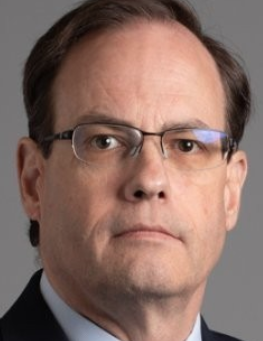Industry Insights
March 27, 2024
Langham: Shootings and Compensability
- National
- - 0 shares
Three shootings. Three examples. An opportunity to discuss the interaction of "arising out of "and the parallel requirement of "course and scope."

Judge David Langham
Too often, there is confusion between these two distinct tests. The confusion is due in large part to poor appellate analysis and intermingling. The three examples for this conversation today include the instance in New Mexico in which actor and producer Alec Baldwin stands accused. Today, I address recent instances in the case law and news.
We begin here in Florida with last August's Normandy Ins. Co. v. Bouayad. The injured worker there was shot seven times while at work. The shooter was not identified, and the trial judge concluded the shooting did "arise out of" and "awarded benefits." The analysis was largely based on a "situational risk" analysis. The trial judge considered the propensity for violence in a particular neighborhood, and the crime rate generally.
The trial judge "concluded that Bouayad's employment substantially contributed to the risk of an attack and to risks that Bouayad would not normally be exposed to during his nonemployment life." The opinion does not state what the crime rates were in the other areas of town that Bouayad frequented (living, shopping, etc.) and how the rates in those "unemployment life" activities compared to the work site. In all, it was an intriguing analysis.
The appellate court reversed. It explained that the claimant "must 'make a showing of some event or circumstances connected with his work to which his injury can be directly attributed.'” The court acknowledged and explained the "any exertion" standard in single-cause injuries and concluded that it is "unreasonable to suggest that the mundane exertion of walking to get around work can be 'causally connected' with an injury from a shooting."
The appellate court concluded, "Chapter 440 does not cover workplace injuries; it covers work-caused injuries." There must be some demonstrable relationship between the work and the injury. Where Mr. Bouayad failed was in not showing that relationship. He proved he was at work and that work was located in an area with a propensity for issues, but not the causation of injury from work. It is critical that there was no dispute about course and scope (the worker was at work and working); that was conceded.
More recently, Federal Express appealed a conclusion of compensability of a shooting at work in the Commonwealth of Kentucky. Figueroa v. Federal Express. This arose from a road rage incident, but it occurred in the parking lot of the workers' apartment residence. No one disputed that the individual was an employee, that he was in a company truck and that he was shot. These are stipulated. But the employer nominally contested the "arising out of."
The employer asserted the worker was not "at work" at the time, but was in the process of "going and coming." That is a "course and scope" argument. It also asserted that the worker was "on his break" at the time, also "course and scope."
The worker was sitting in his employer's vehicle when he was shot. Despite the two "course and scope" defenses, the employer disputed any "causal connection between any work events and the medical condition that is the subject of the claim." That last one is an "arising out of" argument; that is, the relationship of injury to occupation.
The employer later asserted that the worker "was engaged in horseplay at the time of the incident, and therefore his claim is barred." That argument says, essentially, that the "course and scope" was abandoned in favor of some distraction. This can happen when an employee deviates so thoroughly from the purpose of work that her or his actions cannot be said to be in furtherance of the employment purpose. In this, the employer alleged that the worker "escalated the confrontation" and thus departed from course and scope.
Many appellate courts have been reluctant to conclude that horseplay is sufficient to break the "course and scope" barrier. Time and again, there have been conclusions that an employer failed to keep labor actively engaged and thus afforded the boredom that precipitated horseplay or that an employer failed to discipline horseplay and thus created some acceptance or acquiescence of such behavior. Those arguments have been strained at times.
The Figueroa employer's arguments centered on it providing a "one-hour unpaid break each night." Using a digital tool, "drivers logged in and out of breaks." Although the company forbade breaks away from a driver's assigned route, the employer had acquiesced in this worker "go(ing) home for his breaks."
After the shooting, the delivery vehicle was photographed parked at the worker's home. The worker had left the vehicle. He was confronted, retreated to the vehicle and was shot. He had not logged out through his electronic device.
Though "arising out of" was seemingly only obliquely denied, the ALJ addressed the point. She concluded that the confrontation occurred due to the operation of the delivery van. It was a "road rage" incident, and thus the work of van driving precipitated the altercation. This is distinct from Bouayad, in which there was no such work event, confrontation, argument, robbery or similar described or demonstrated.
The remainder of the Figueroa analysis addresses the "going and coming" and other "course and scope" arguments, denying each. In these, there was periodic mention of "arising out of," with the employer arguing that "going and coming" is a defense to both of the two: "arising out of" and "course and scope of." While that seems inartful at best, there are numerous appellate interpretations across the country that both mention and even rely on such an interpretation.
In short, many courts have mixed the two defenses.
In Figueroa, the employer seemingly makes the inverse argument to Bouayad. In Bouayad, the worker argued positional risk (at work, so it must be work). In Figueroa, the employer argued the same doctrine (at home, so it must not be work). That "positional risk" did not work in either instance. The location alone did not carry the day in either analysis. That is instructive.
The Kentucky Board noted that the Figueroa facts "are simple." The worker was doing his job and deviated to return home for an unpaid break. This was a condoned departure from course and scope. In parking, he upset a fellow traveler who confronted, pursued and shot the worker. The worker had not clocked out and had not "actually initiated his break." He was, in short, at work, working and that work precipitated the attack from another.
The final shooting incident involves actor Alec Baldwin pointing a gun at a co-worker under the apparent mistaken belief that the tool was not loaded. He claims that he did not squeeze the trigger, but there are allegations that the weapon could not have discharged without such a trigger squeeze. The result is one co-worker dead and another significantly wounded.
In this, we see an employee (Baldwin) clearly in the "course and scope." He was rehearsing a scene for a movie, and the entire crew was present for that movie-making purpose. He pointed the tool as called upon in the script, and somehow that tool discharged. The individuals struck were behind the camera. They were privy to the script and knew the tool would be pointed. They were both also in the "course and scope." There is no fact known at this time that would suggest that the shot was not in the "course and scope."
That said, there may have been failings. Should the employer have somehow shielded the victims behind a barricade? Should the gun have been inspected before it was pointed? Should there have ever been live ammunition on a movie set? Those are all possible arguments about the liability of the employer (which coincidentally may also include Baldwin as a producer of the movie). But none of those arguments raise a compensability defense against the individuals shot, should they claim workers' compensation.
The two who were shot were doing their jobs behind the camera. They were not deviating from the "course and scope" in some way or abandoning the purpose of their employment. But did the shooting "arise out of" the employment? That question returns to the presence of live ammunition. Was there ever any arguable need or excuse for the presence of live ammunition? Was the presence of that ammunition beyond the employment and thus supporting that the shooting arose from criminality or gross neglect rather than the making of a movie?
In that, it is possible that an injured person (or an estate) might seek to avoid the application of workers' compensation. The injured person might strive to prove that the injury should not be constrained by such a system, and thus the employer is not protected by exclusive remedy.
It surprises many, but sometimes an employee seeks to avoid workers' compensation and seek civil damages instead. The arguments for that, of gross negligence or similar, are likely to focus on the same "course and scope" and "arising out of" analyses.
David Langham is deputy chief judge of the Florida Office of Judges of Compensation Claims. This column is reprinted, with his permission, from his Florida Workers' Comp Adjudication blog.
Advertisements
Columns
- Montgomery: San Fran City Official Stole $627k From Workers' Comp Division 12/10/25
- Kamin: Ring the Bells for Settlement Season 12/08/25
- Paduda: Does Comp Care About Workers? 12/05/25
- Sandoval: Throwing Subrogation Under the Bus 12/03/25
- Johnson: Some Thoughts on Apportionment - And SIBTF 11/20/25
- Montgomery: State's First Responders May File Comp Claims for Trauma 11/14/25
- Snyder: Use This New Survey to Negotiate Better 11/12/25
- Holden: Workers' Compensation Act Withstands Another Constitutional Attack 11/11/25
- Gelman: Sherrill's Win Locks in Worker Protections 11/10/25
- Kamin: Newsom Promises SIBTF Reforms in 2026 11/07/25
- Kamin: Comp Costs Hit Highest Combined Ratio Since 2001, WCIRB Says 11/05/25
- Montgomery: DIR to Blow $1.25M on Another Questionable Comp Study 11/03/25
- Wroten: California Sets the Standard as New Study Links Workplace Injuries to Heat Exposure 10/29/25
- Kamin: En Banc Clarifies Policy Reporting Requirements 10/27/25
- Gelman: PTSD-Stricken Officer's Disability Claim Denied 10/22/25
- Snyder: TAG a Structured Settlement Broker 10/17/25
- Snyder: New Medi-Cal Rules Can Affect Your Settlement 10/15/25
- Fish: Guarding Against PTSD Overdiagnosis 10/10/25
- Montgomery: DWC's MPN List Disappears Yet Again 10/08/25
- Ferguson: A Tribute to Thomas Chapman Lynch 10/06/25
Now Trending
- Workers' Compensation News
-
Calif. Court: WCAB
Has Duty to Flesh Out Witness
Statements When Workers Can't…
Posted on Dec 9, 2025
-
Calif. Fraud
Conviction Leads to $132,023
Restitution…
Posted on Dec 16, 2025
-
Calif. Court Nixes
Requirement to Add Comp Coverage to
FAIR…
Posted on Dec 10, 2025
-
Mo. Carrier Must
Pay Bill for Worker's Knee…
Posted on Dec 11, 2025
-
Wis. Employer
Wrongfully Refuses to Rehire
Injured Truck…
Posted on Dec 10, 2025
-
N.J. Legislators
Seek to Block ABC Rule…
Posted on Dec 15, 2025
-
N.C. County Solely
Liable for Off-Duty Officer's
Injuries on Traffic…
Posted on Dec 16, 2025
-
N.J. High Court:
Comp Judge Can Rule on Law She
Sponsored in…
Posted on Dec 12, 2025
-
N.Y. Widow Doesn't
Need Carrier's Consent to Settle
Third-Party…
Posted on Dec 9, 2025
-
Ariz. Court
Upholds Closure of Worker's Claim
for Injuries From Being Punched by…
Posted on Dec 12, 2025
Jobs
- Workers' Compensation Defense Attorney (REMOTE)
- Workers’ Compensation Defense Attorney - 100% Remote
- In-house REMOTE Workers' Compensation Litigation Attorney
- Defense Attorneys - Remote Work Available
- Trial Attorney - Workers Compensation Staff Counsel
- Defense WC Attorney Wanted- We will beat any offer for the right candidate. Low billables, real bonuses and fast track equity partnership
- testing posting a job Workers' Compensation Jobs
Upcoming Events
Mar 3-4, 2026
Save The Date! WCRI’s 2026 Ann
Registration will open up in the coming months. We'll see you there! - Leading national workers' …
Mar 5-6, 2026
DWC’s 33rd Annual Educational
Register Now! 2026 conference topics: DWC Update AI with a Claims Focus Medical and Legal Ethics …
Mar 19-20, 2026
DWC’s 33rd Annual Educational
Register today! 2026 conference topics: DWC Update AI with a Claims Focus Medical and Legal Ethi …
Social Media Links
c/o Business Insurance Holdings, Inc.
Greenwich, CT 06836




No Comments
Log in to post a comment